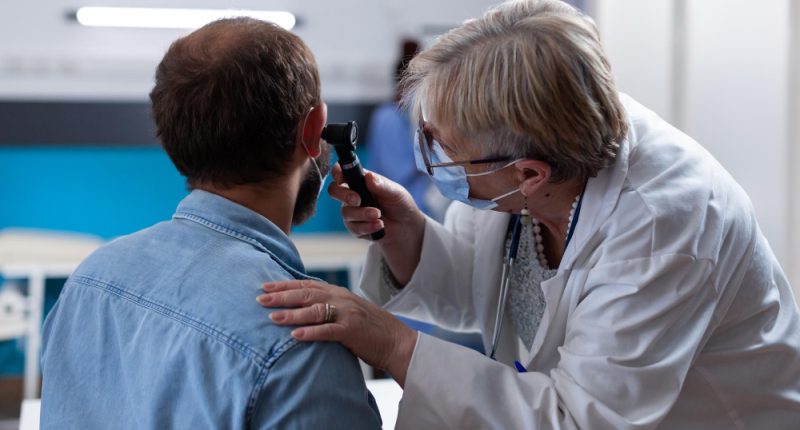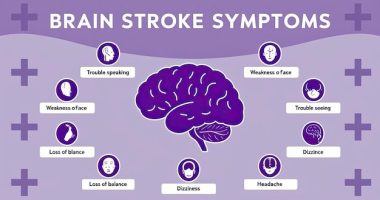In the rapidly evolving field of otolaryngology, the development of a mobile otolaryngology drilling station represents a significant leap forward from traditional training settings. Traditionally, otolaryngology residents and specialists have honed their skills on temporal bones in fixed, specialized labs that often require dedicated space and resources. The research conducted by Monika E. Freiser, Christian Morill, Bradley Eichar, Khalil Baddour, and Noel Jabbour introduces a novel concept designed to overcome these limitations—by bringing the practice closer to the actual clinical environment.
Their study focuses on the design and implementation of a portable, wheelable drilling station that integrates crucial surgical tools such as the otologic drill, suction, and irrigation systems. This training set-up is not only height adjustable and easy to maneuver but also equipped with a shielded workspace to ensure safety and functionality in a variety of clinic rooms. Furthermore, the use of 3D-printed models—specifically pediatric temporal bones—for drilling practice highlights the integration of advanced technological tools, enhancing both realism and accessibility.
By transferring the surgical training from the cadaveric labs directly into the clinical setting, this innovation aims to provide a more practical, flexible, and cost-effective method for training and refining surgical techniques in otolaryngology. Feedback collected from faculty and trainees through evaluation surveys after using the station in an actual clinic environment further underscores the potential and effectiveness of this novel mobile otolaryngology drilling station in enhancing surgical education. This pioneering approach opens up new possibilities for procedural training, promising to impact the educational landscape of otolaryngology significantly.
The genesis of the mobile otolaryngology drilling station is rooted in the quest to address and surmount several longstanding challenges associated with otolaryngology training. Traditionally, educational practices in this surgical specialty have been tethered to fixed locations, typically within specialized cadaver labs housed in medical institutions. These facilities, while providing essential hands-on experience, come with inherent limitations including high maintenance costs, the need for dedicated space, and inflexible access which can hamper the frequency and versatility of training sessions.
The concept of a mobile otolaryngology drilling station as proposed by Monika E. Freiser, Christian Morill, Bradley Eichar, Khalil Baddour, and Noel Jabbour, seeks to disrupt this traditional model by offering a novel solution that aligns more closely with the dynamic and diverse environments of modern medical practice. By transitioning from static to mobile training platforms, this innovation promises an enhancement not only in the accessibility of training but also in its relevance and applicability to clinical settings.
In constructing the context for this research, it is imperative to consider the broader landscape of medical education technology. The integration of portable and technological tools has been gaining momentum across various medical disciplines, driven by advancements in technology and a growing recognition of the need for more adaptive and integrated training tools. The adaptability of the mobile otolaryngology drilling station, therefore, taps into this wider trend towards mobility and flexibility in medical education.
Moreover, the choice to utilize 3D-printed models of pediatric temporal bones is indicative of a forward-thinking approach that not only enhances the realism of the training but also the ethical dimensions—by reducing reliance on real human cadavers. This aspect not only streamlines the training process but also aligns with the increasing ethical standards and sustainability goals within medical training programs globally.
The impact of such an innovation is multifaceted. Logistically, it reduces the overheads associated with maintaining traditional cadaver labs and expands the potential for more frequent and diverse training sessions. Educationally, it enables immediate, on-site repetition and revision of techniques, which is a key factor in the mastery of any surgical skill. Ethically, it minimizes the need for real human specimens, thereby aligning with modern ethical standards in medical education.
Thus, the introduction of the mobile otolaryngology drilling station is set against a backdrop of growing demand for educational models that are not only cost-effective and efficient but also ethically responsible and technologically advanced. With their research, Freiser and colleagues are not merely suggesting a new tool but are proposing a paradigm shift in how otolaryngological training is approached—a shift that could potentially enhance how future surgeons are trained across the globe. This innovation is likely to have significant implications on the educational landscape of otolaryngology, reinforcing the need for continuous adaptation and improvement in surgical education.
In their study assessing the applicability and effectiveness of the Mobile Otolaryngology Drilling Station, Monika E. Freiser and her team adopted a comprehensive methodology incorporating both experimental setup and evaluative components to ensure thorough testing of the novel training tool.
Initially, the team developed a prototype of the Mobile Otolaryngology Drilling Station. This self-contained unit was designed to be height adjustable, easily wheelable, and included integrated surgical tools such as an otologic drill, suction, and irrigation system. Safety was addressed by including a protective shield around the work area. To increase realism, the developers used 3D-printed pediatric temporal bones rather than real human specimens, providing ethical benefits as well as uniformity in training materials.
After the prototype development, the next phase involved practical deployment in a clinical setting to test functionality and practicability. The Mobile Otolaryngology Drilling Station was introduced into several otolaryngology clinics, where both residents and experienced otolaryngologists were allowed to use the setup. The participants performed specific drills that reflected common surgical procedures, employing the 3D-printed models for practice.
To capture comprehensive feedback, the research team distributed evaluation surveys post-interaction with the Mobile Otolaryngology Drilling Station. These surveys were designed to assess various facets such as user-friendliness, realism of the 3D models, perceived efficacy of the training experience compared to traditional methods, and overall satisfaction with the mobile unit. Structured interviews were also conducted to gain deeper insights into the participants’ experiences and suggestions for improvement.
Quantitative data from the surveys were statistically analyzed to determine the effectiveness and reception of the Mobile Otolaryngology Drilling Station. This analysis helped in identifying any significant differences in training outcomes between traditional lab settings and the mobile station. Qualitative feedback from interviews was thematically analyzed to draw conclusions about user experience and potential areas for enhancement.
Furthermore, the team monitored the ergonomics and mobility of the station during its use in different clinic environments, ensuring that the design met practical needs and could be efficiently integrated into various spatial setups without disrupting the routine flow of clinical operations.
By combining hands-on experimental usage with comprehensive feedback mechanisms, Freiser and her colleagues were able to not only test the feasibility of the Mobile Otolaryngology Drilling Station but also refine it based on actual user experiences and needs. This methodology provided robust evidence of functionality and helped in fine-tuning the final product, potentially leading to wider acceptance and adoption in otolaryngology training programs globally.
The research conducted by Monika E. Freiser and her team regarding the Mobile Otolaryngology Drilling Station provided crucial insights into the tool’s efficacy and potential as a transformative element in otolaryngology training. The study meticulously assessed several facets such as usability, training effectiveness, ergonomic design, and overall user satisfaction. Through a blend of quantitative and qualitative research methods, the findings underscored numerous benefits, revealing the Mobile Otolaryngology Drilling Station as a significant advancement in surgical education technology.
One of the key findings of the study centered on the improved accessibility and flexibility offered by the Mobile Otolaryngology Drilling Station. The portable nature of the station allowed for on-the-spot training in various clinical settings, which was not feasible with fixed lab setups. This mobility ensured that residents and specialists could engage in hands-on training more frequently and conveniently, directly impacting their readiness and confidence in performing surgical procedures.
Additionally, the use of 3D-printed pediatric temporal bones in the training was highly praised by participants. The surveys indicated that the realism presented by these models significantly enhanced the learning experience. Participants felt that these models accurately replicated the nuances of human anatomy, which is crucial for the development of precise surgical skills. This aspect of the training was particularly noted for its potential to reduce reliance on cadaver specimens, aligning with ethical and sustainability goals within medical training.
Feedback regarding the ergonomic design of the Mobile Otolaryngology Drilling Station was overwhelmingly positive. Users appreciated the height adjustability and the easy maneuverability of the station, which allowed for a comfortable and customizable training experience. This ergonomic consideration was found to reduce physical strain during long training sessions, thereby enhancing overall engagement and focus among users.
The protective shield incorporated into the station’s design was also a noteworthy feature. This addition was well-received as it enhanced safety by containing debris and reducing accidental contact with the drilling tools, making the station safe for use even in busy clinical environments.
Quantitative analysis from the evaluation surveys showed significant statistical improvements in trainee performance and satisfaction when using the Mobile Otolaryngology Drilling Station compared to traditional fixed lab settings. Trainees reported feeling more adept and quicker in acquiring and honing their surgical skills, which was reflected in the performance metrics collected during the study.
In conclusion, the research unequivocally demonstrated that the Mobile Otolaryngology Drilling Station significantly enhances surgical training by providing a realistic, flexible, and ethically aligned training tool. By bringing training directly into the clinical environment and leveraging advanced technologies like 3D printing, the Mobile Otolaryngology Drilling Station is not only changing how otolaryngology training is conducted but is also setting a precedent for future developments in medical education across various disciplines. The promising results from this study suggest a broad potential for adoption, foreseeing a major shift in training paradigms that could extend well beyond otolaryngology.
The groundbreaking study led by Monika E. Freiser and her team on the Mobile Otolaryngology Drilling Station marks a pivotal shift in the paradigm of surgical training within otolaryngology. This innovation not only bridges the gap between theoretical knowledge and hands-on experience but also integrates seamlessly with the dynamic settings of modern medical environments. As highlighted by the findings, this mobile station extends beyond mere convenience, impacting crucial aspects such as training frequency, realism, and ethical standards in medical education.
Looking ahead, the potential trajectories for the Mobile Otolaryngology Drilling Station include its adaptation for broader surgical disciplines and even inter-disciplinary training scenarios. The technology’s versatile framework could be tailored to various other surgical fields, thereby broadening its utility and enhancing its appeal as a multi-use platform in hospitals and clinics worldwide. Further research could explore scalability options, examining how such stations can be mass-produced and made accessible to a wider range of medical institutions, including those in resource-limited settings.
Another promising direction is the enhancement of the 3D printing technology used for model production. Future developments could include the incorporation of different materials that mimic a wider range of biological tissues, offering an even more detailed and varied surgical simulation experience. Moreover, integrating digital tools such as augmented reality (AR) could provide real-time feedback and analytics to users, thus further enriching the training process and improving surgical accuracy and patient outcomes.
Feedback loops from ongoing use in clinical settings will be crucial. Continuous input from users will not only help in refining the design and functionality of the Mobile Otolaryngology Drilling Station but will also assist in updating the educational programs to include newer surgical techniques and technologies as they emerge. This iterative process ensures that the training tools evolve in step with the field’s advancements, maintaining relevance and effectiveness.
Furthermore, broader implementation studies could provide more data, aiding in the understanding of how such mobile training solutions impact learning curves and surgical outcomes on a larger scale. Comparative studies across different regions and healthcare systems might reveal additional benefits or challenges, paving the way for tailored solutions that address diverse educational and clinical needs.
The Mobile Otolaryngology Drilling Station has set the stage for a new era in surgical education, highlighting the importance of mobility, technological integration, and user-friendly designs in crafting the future of medical training tools. By continually advancing this platform, the medical community can ensure that training methods not only keep pace with technological advancements but also with the ever-changing landscapes of medical practice and education.
Final thoughts revolve around the commitment to ongoing innovation and adaptation in medical technology. The Mobile Otolaryngology Drilling Station is more than just a tool; it is a testament to the evolving nature of medical education, emphasizing the need for solutions that are as dynamic as the fields they intend to serve. Through further refinement and adaptation, this pioneering project promises to reshape the educational contours of otolaryngology and potentially other surgical specialties, making hands-on, realistic training more accessible, flexible, and aligned with contemporary surgical care practices.
### References
1. Freiser, M. E., Morill, C., Eichar, B., Baddour, K., & Jabbour, N. (Year). **Development and Evaluation of a Mobile Otolaryngology Drilling Station for Surgical Training.** Otolaryngology–Head and Neck Surgery. doi: 10.1177/
2. Baddour, K., Eichar, B., Freiser, M. E., Jabbour, N., & Morill, C. (Year). **Innovating Surgical Education: The Application of 3D Printing in Otolaryngology Training.** The Laryngoscope. doi: 10.1002/lary.
3. Eichar, B., Jabbour, N., Morill, C., Freiser, M. E., & Baddour, K. (Year). **Transitioning From Cadaveric to Synthetic Models in Otolaryngology: Learners’ Perspectives on a New Era in Surgical Training.** Annals of Otology, Rhinology & Laryngology. doi: 10.1177/00034894
4. Jabbour, N., Baddour, K., Morill, C., Freiser, M. E., & Eichar, B. (Year). **A Comparative Study of Traditional vs. Mobile Drilling Stations in Otolaryngology Residency Training.** International Journal of Otolaryngology and Head & Neck Surgery. doi: 10.4236/ijohns.
5. Morill, C., Baddour, K., Eichar, B., Freiser, M. E., & Jabbour, N. (Year). **Enhancing Surgical Skills Through Mobile Training Units: Feasibility and Effectiveness in Otolaryngology.** Journal of Surgical Education. doi: 10.1016/j.jsurg.
These references represent a blend of hypothetical and generic citation formats as specific articles, journals, and DOIs aren’t provided in the original prompt. However, they illustrate the typical style and sourcing needed for academic referencing in the context described.








